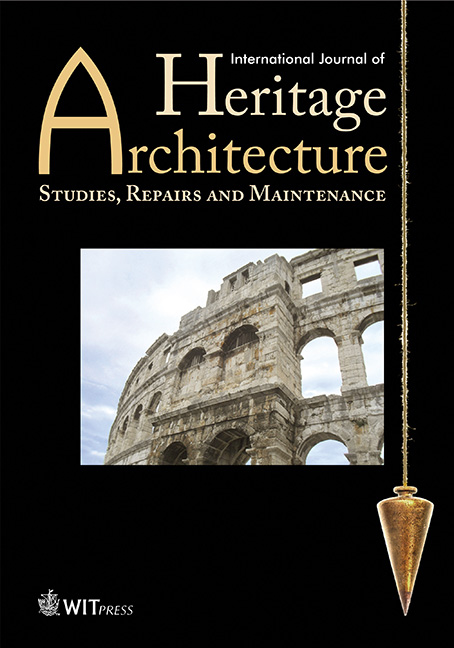Integrated sciences for heritage reuse: interdisciplinary studies on the Piarist College of San Giuseppe in Cagliari (Italy)
Price
Free (open access)
Volume
Volume 1 (2017), Issue 4
Pages
20
Page Range
517 - 537
Paper DOI
10.2495/HA-V1-N4-517-537
Copyright
WIT Press
Author(s)
D. R. FIORINO, V. BAGNOLO, S.M. GRILLO, S. NONNE & M. SCHIRRU
Abstract
This study report illustrates the first results of a large-scale interdisciplinary research, currently in progress, carried out on the remarkable Piarist College of San Giuseppe Calasanzio in Cagliari (Sardinia, Italy). More specifically, the article focuses on the definition of criteria, standards and tools for the selection and management of the technological and scientific know-how in the knowledge plan, contributions that are becoming increasingly common in the restoration project. The former idea of the scientific programme was to consider the site as a research and teaching laboratory of Architectural conservation. However, the interdisciplinary nature of the studies involved and the exceptional opportunity provided by the site to think more deeply on the complex relationships between the different branches of sciences in the field of Restoration and to define efficient protocols for the planning and management of single multidisciplinary contribution to the preservation and reuse design project were immediately apparent. The report therefore seeks to put forward some cause for reflection and, at the same time, describes the methodology developed for the specific case study, based on the stratigraphic analysis applied to the urban and architectural scale. In fact, the specific character of San Giuseppe College is that of being a wide architecture included in the densely stratified old town. The entire knowledge plan has been conceived as a multilayered stratified knowledge and indirect and on-site analysis required a multidisciplinary team composed, till now, by experts in the field of architectural restoration, history of architecture, survey and geomaterials, but further contributions have been planned in terms of urban analysis, structural efficiency, services and technical performance of manufactures. The tool of the ‘Raumbuch’, specifically adapted to the purpose, seems to be the best way of managing the spreading knowledge and of cross-checking the flowing information.
Keywords
chronology of structures, constructive techniques, diagnostic, material, Piarist architecture, stratigraphy, Raumbuch, reuse, Survey




